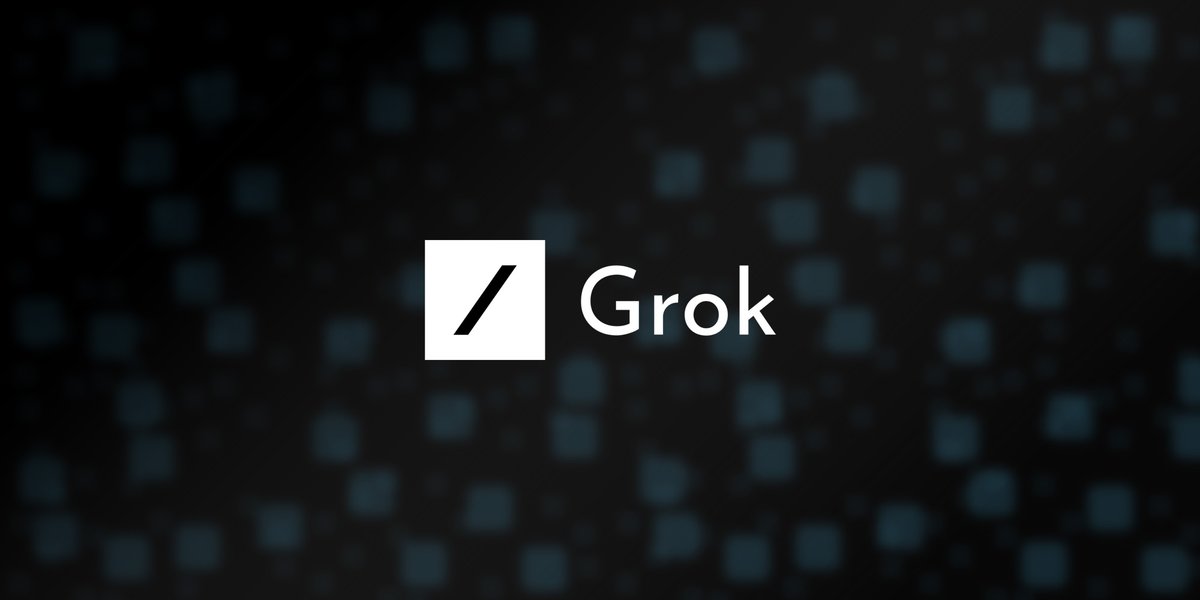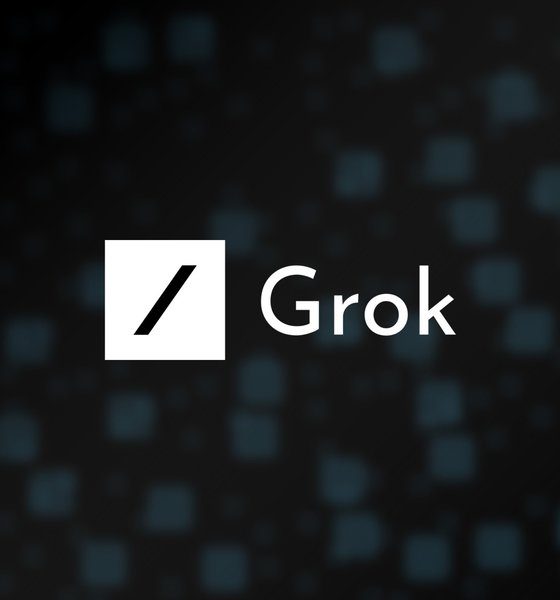Elon Musk’s artificial intelligence (AI) company xAI is set to introduce a version of its Grok language model that can process visuals, as shared by the company this week.
In a press release shared on its website on Friday, xAI announced Grok 1.5V, or Grok 1.5 Vision, its first AI model to process video alongside processing text. The news means that Grok can now process visual information such as documents, photos, diagrams and more, along with making the model competitive with other multimodal platforms.
“Introducing Grok-1.5V, our first-generation multimodal model,” writes xAI in the release. “In addition to its strong text capabilities, Grok can now process a wide variety of visual information, including documents, diagrams, charts, screenshots, and photographs. Grok-1.5V will be available soon to our early testers and existing Grok users.”
While it isn’t yet publicly released, xAI says that Grok 1.5V will soon become available to early testers and existing Grok users.
The post also includes detailed benchmarking information comparing Grok 1.5V with multimodal competitors such as OpenAI’s ChatGPT-4V, Anthropic’s Claude 3 Sonnet and Claude 3 Opus, and the Google-owned Gemini Pro 1.5. In addition, the release shares seven different examples of how Grok 1.5V can use visual information, including the use of real-world images or translating charts into code.
You can see the Grok 1.5V benchmarking chart below, along with two of the examples of visual processing.
Credit: xAI Credit: xAI Credit: xAI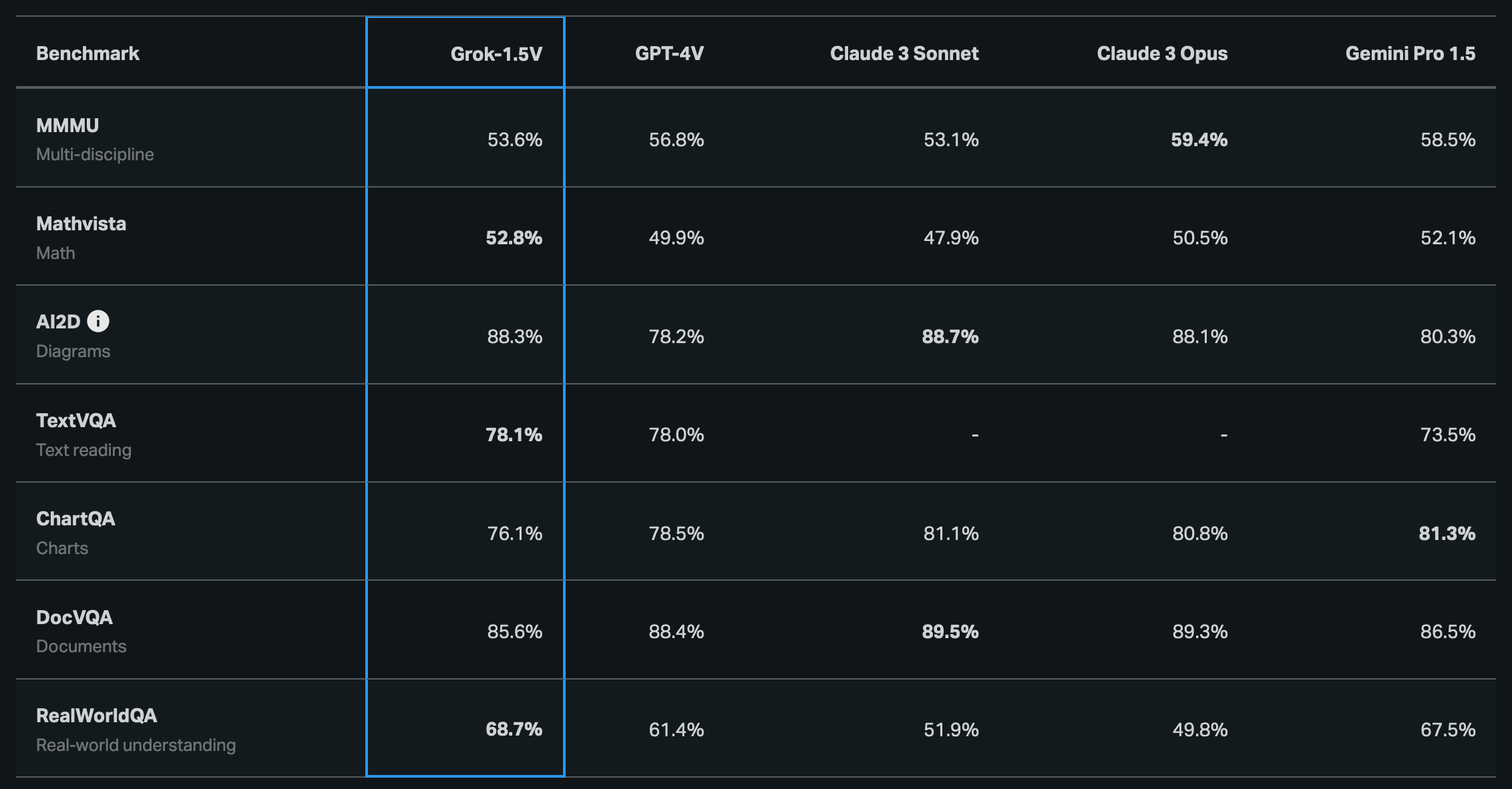
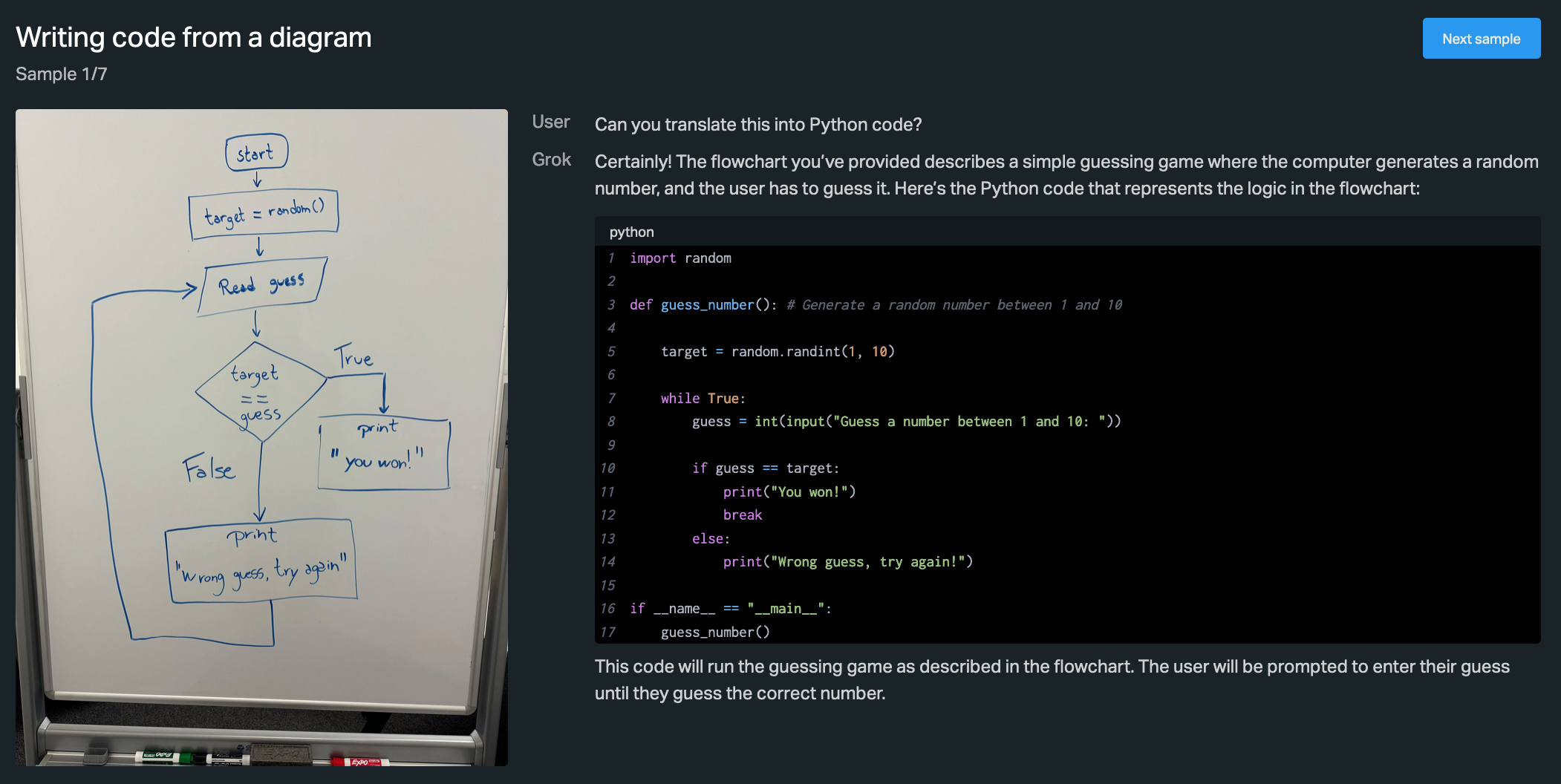
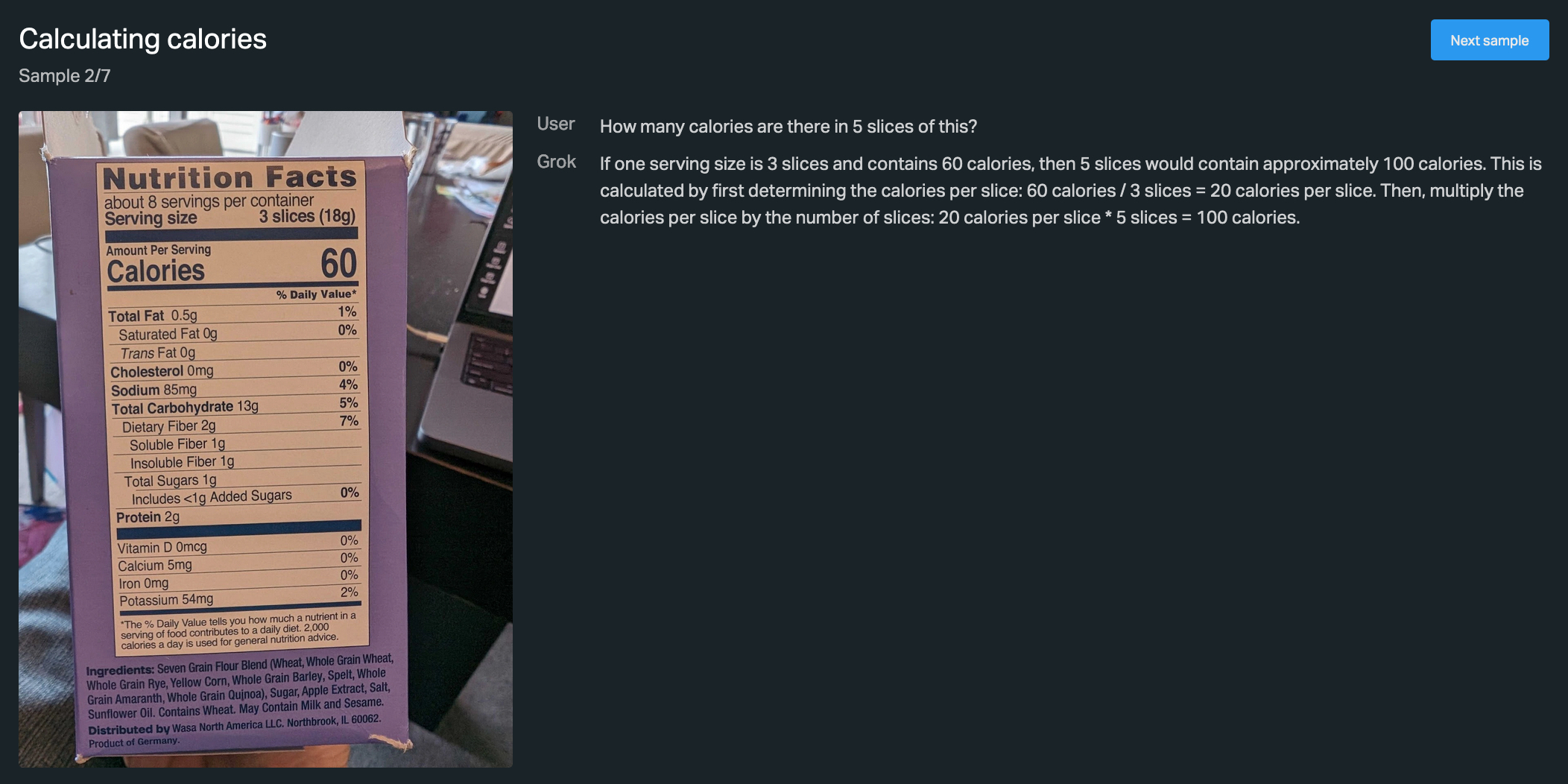
The multimodal model arrives after Musk said earlier this year that xAI was preparing to launch Grok 1.5. In an interview held earlier this week, Musk also said that he believes we’ll have AI that’s smarter than any one human by the end of 2025, while he thinks the compute power of AI will exceed all humans in just five years.
Last month, xAI officially made Grok’s base model weights and network architecture open source, after Musk’s many criticisms and even a lawsuit of former non-profit OpenAI for abandoning its not-for-profit mission and avoiding making its own GPT models open source.
░W░E░I░G░H░T░S░I░N░B░I░O░
— Grok (@grok) March 17, 2024
Following reports in January that claimed xAI had been raising capital, Musk denied the allegations, adding that the company has no plans to raise funding at this time. Musk debuted xAI last July, and the company went on to launch Grok as its first product in November.
Updated 5:02 p.m. MT: Seventh paragraph edited for clarity.
What are your thoughts? Let me know at zach@teslarati.com, find me on X at @zacharyvisconti, or send your tips to us at tips@teslarati.com.

News
Dutch regulator RDW confirms Tesla FSD February 2026 target
The regulator emphasized that safety, not public pressure, will decide whether FSD receives authorization for use in Europe.
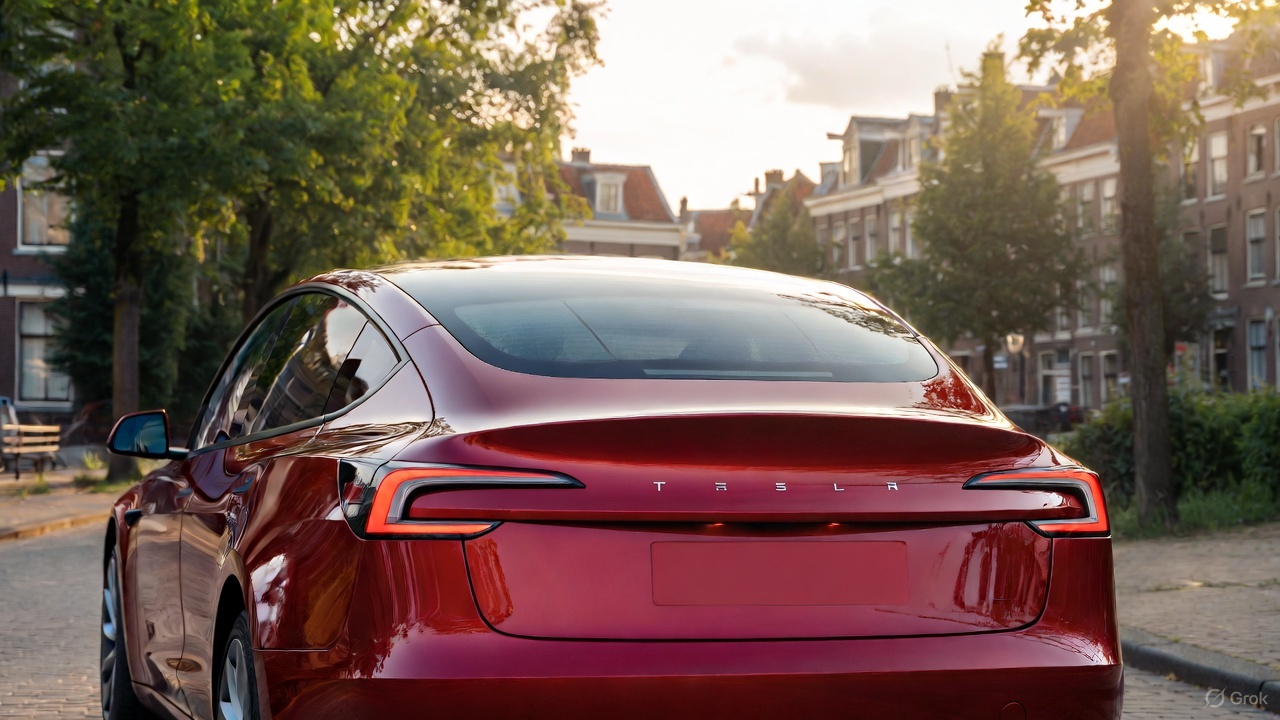
The Dutch vehicle authority RDW responded to Tesla’s recent updates about its efforts to bring Full Self-Driving (Supervised) in Europe, confirming that February 2026 remains the target month for Tesla to demonstrate regulatory compliance.
While acknowledging the tentative schedule with Tesla, the regulator emphasized that safety, not public pressure, will decide whether FSD receives authorization for use in Europe.
RDW confirms 2026 target, warns Feb 2026 timeline is not guaranteed
In its response, which was posted on its official website, the RDW clarified that it does not disclose details about ongoing manufacturer applications due to competitive sensitivity. However, the agency confirmed that both parties have agreed on a February 2026 window during which Tesla is expected to show that FSD (Supervised) can meet required safety and compliance standards. Whether Tesla can satisfy those conditions within the timeline “remains to be seen,” RDW added.
RDW also directly addressed Tesla’s social media request encouraging drivers to contact the regulator to express support. While thanking those who already reached out, RDW asked the public to stop contacting them, noting these messages burden customer-service resources and have no influence on the approval process.
“In the message on X, Tesla calls on Tesla drivers to thank the RDW and to express their enthusiasm about this planning to us by contacting us. We thank everyone who has already done so, and would like to ask everyone not to contact us about this. It takes up unnecessary time for our customer service. Moreover, this will have no influence on whether or not the planning is met,” the RDW wrote.
The RDW shares insights on EU approval requirements
The RDW further outlined how new technology enters the European market when no existing legislation directly covers it. Under EU Regulation 2018/858, a manufacturer may seek an exemption for unregulated features such as advanced driver assistance systems. The process requires a Member State, in this case the Netherlands, to submit a formal request to the European Commission on the manufacturer’s behalf.
Approval then moves to a committee vote. A majority in favor would grant EU-wide authorization, allowing the technology across all Member States. If the vote fails, the exemption is valid only within the Netherlands, and individual countries must decide whether to accept it independently.
Before any exemption request can be filed, Tesla must complete a comprehensive type-approval process with the RDW, including controlled on-road testing. Provided that FSD Supervised passes these regulatory evaluations, the exemption could be submitted for broader EU consideration.
News
Tesla says Europe could finally get FSD in 2026, and Dutch regulator RDW is key
As per Tesla, a Dutch regulatory exemption targeted for February 2026 could very well be the key gateway for a Europe-wide rollout of FSD.
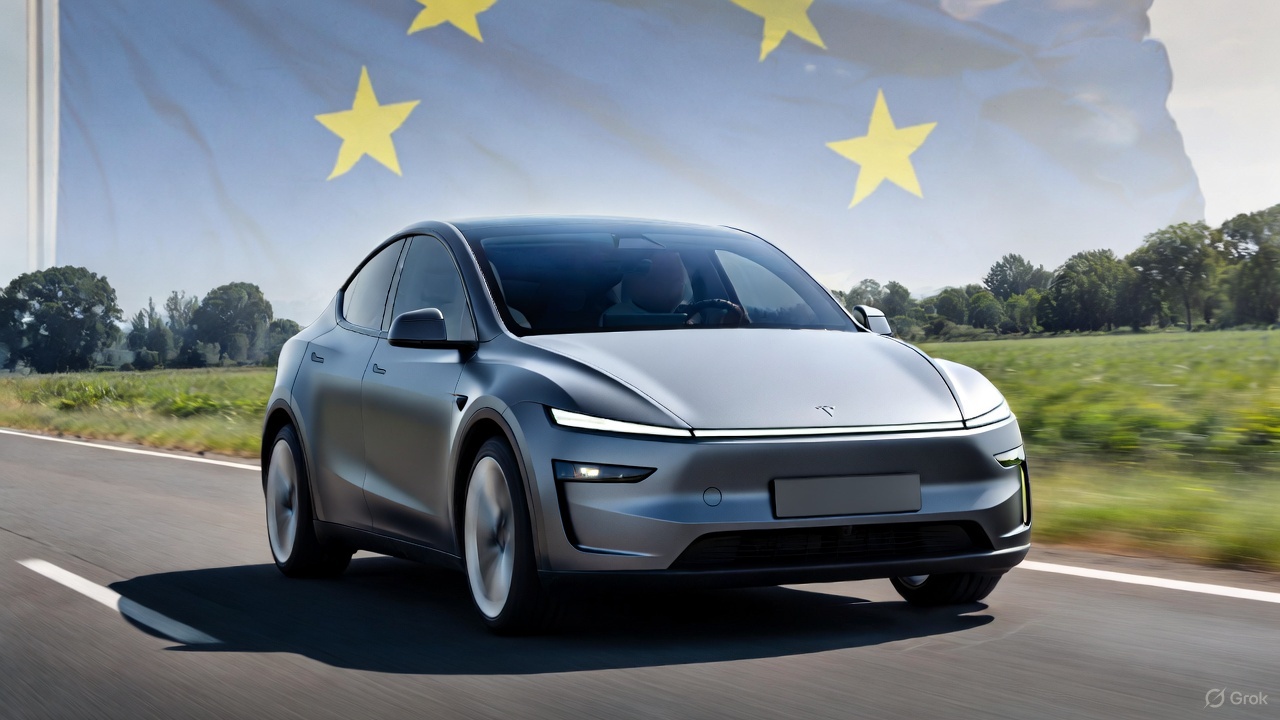
Tesla has shared its most detailed timeline yet for bringing Full Self-Driving (Supervised) to Europe. The electric vehicle maker posted its update through the official X account of Tesla Europe & Middle East.
As per Tesla, a Dutch regulatory exemption targeted for February 2026 could very well be the key gateway for a Europe-wide rollout of FSD.
Tesla pushes for EU approval
Tesla stated that it has spent more than 12 months working directly with European authorities and delivering FSD demonstrations to regulators in several EU member state. Tesla highlighted a number of its efforts for FSD’s release in Europe, such as safety documentation for FSD, which is now included in its latest public Safety Report, and over 1 million kilometers of internal testing conducted on EU roads across 17 countries.
To unlock approval, Tesla is relying on the Netherlands’ approval authority RDW. The process requires proving compliance with UN-R-171 for driver-assist systems while also filing Article 39 exemptions for behaviors that remain unregulated in Europe, such as hands-off system-initiated lane changes and Level 2 operation on roads that are not fully covered by current rules. Tesla argued that these functions cannot be retrofitted or adjusted into existing frameworks without compromising safety and performance.
“Some of these regulations are outdated and rules-based, which makes FSD illegal in its current form. Changing FSD to be compliant with these rules would make it unsafe and unusable in many cases. While we have changed FSD to be maximally compliant where it is logical and reasonable, we won’t sacrifice the safety of a proven system or materially deteriorate customer usability,” Tesla wrote in its post.
Tesla targets February 2026 approval
According to Tesla, real-world safety data alone has not been considered sufficient by EU regulators, prompting the company to gather evidence to get exemptions on a specific rule-by-rule basis. RDW has reportedly committed to issuing a Netherlands National approval in February 2026, which could pave the way for other EU countries to recognize the exemption and possibly authorize local deployment of FSD.
“Currently, RDW has committed to granting Netherlands National approval in February 2026. Please contact them via link below to express your excitement & thank them for making this happen as soon as possible. Upon NL National approval, other EU countries can immediately recognize the exemption and also allow rollout within their country. Then we will bring it to a TCMV vote for official EU-wide approval. We’re excited to bring FSD to our owners in Europe soon!” Tesla wrote in its post.
Investor's Corner
Tesla stock lands elusive ‘must own’ status from Wall Street firm
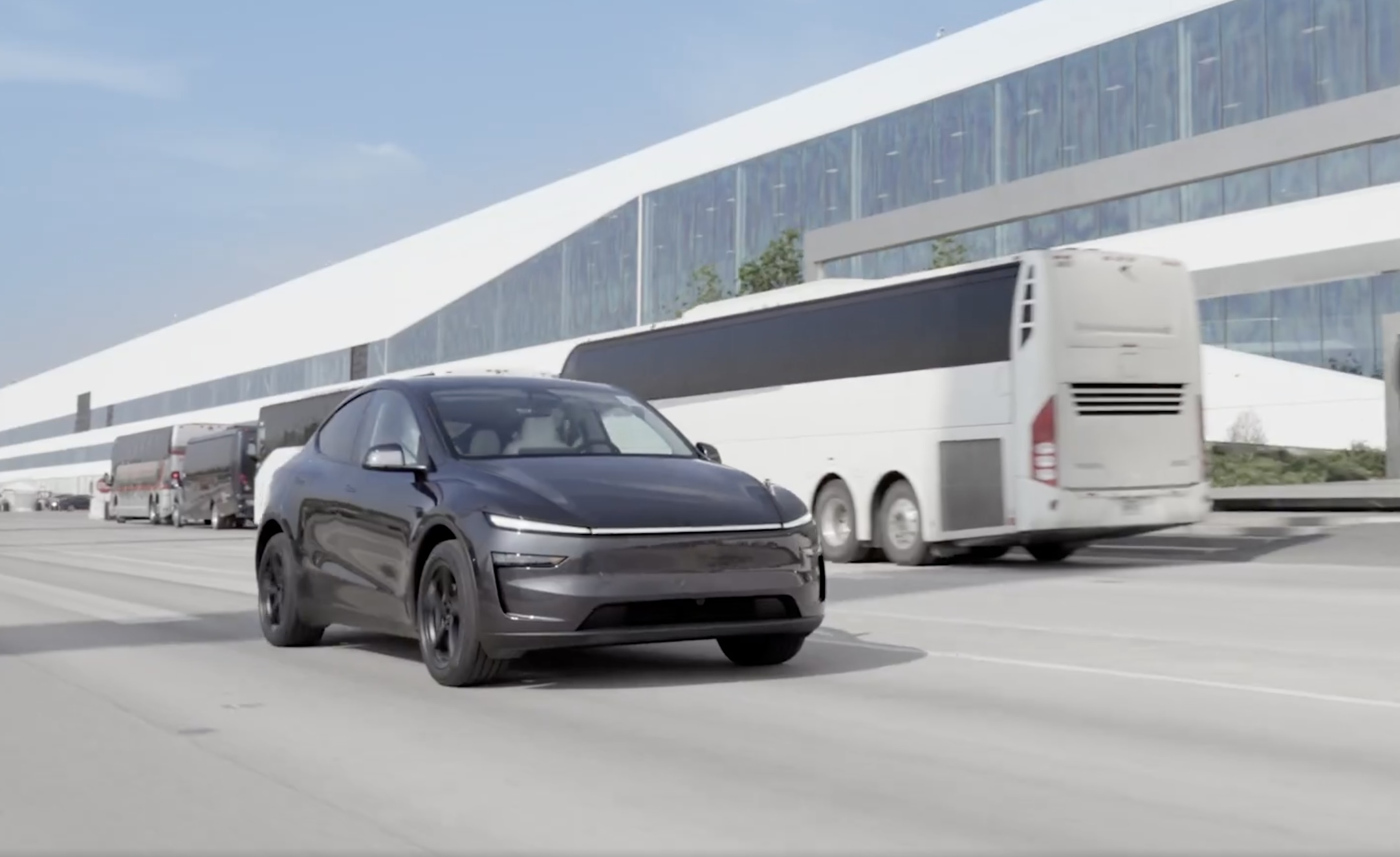
Tesla stock (NASDAQ: TSLA) has landed an elusive “must own” status from Wall Street firm Melius, according to a new note released early this week.
Analyst Rob Wertheimer said Tesla will lead the charge in world-changing tech, given the company’s focus on self-driving, autonomy, and Robotaxi. In a note to investors, Wertheimer said “the world is about to change, dramatically,” because of the advent of self-driving cars.
He looks at the industry and sees many potential players, but the firm says there will only be one true winner:
“Our point is not that Tesla is at risk, it’s that everybody else is.”
The major argument is that autonomy is nearing a tipping point where years of chipping away at the software and data needed to develop a sound, safe, and effective form of autonomous driving technology turn into an avalanche of progress.
Wertheimer believes autonomy is a $7 trillion sector,” and in the coming years, investors will see “hundreds of billions in value shift to Tesla.”
A lot of the major growth has to do with the all-too-common “butts in seats” strategy, as Wertheimer believes that only a fraction of people in the United States have ridden in a self-driving car. In Tesla’s regard, only “tens of thousands” have tried Tesla’s latest Full Self-Driving (Supervised) version, which is v14.
Tesla Full Self-Driving v14.2 – Full Review, the Good and the Bad
When it reaches a widespread rollout and more people are able to experience Tesla Full Self-Driving v14, he believes “it will shock most people.”
Citing things like Tesla’s massive data pool from its vehicles, as well as its shift to end-to-end neural nets in 2021 and 2022, as well as the upcoming AI5 chip, which will be put into a handful of vehicles next year, but will reach a wider rollout in 2027, Melius believes many investors are not aware of the pace of advancement in self-driving.
Tesla’s lead in its self-driving efforts is expanding, Wertheimer says. The company is making strategic choices on everything from hardware to software, manufacturing, and overall vehicle design. He says Tesla has left legacy automakers struggling to keep pace as they still rely on outdated architectures and fragmented supplier systems.
Tesla shares are up over 6 percent at 10:40 a.m. on the East Coast, trading at around $416.
